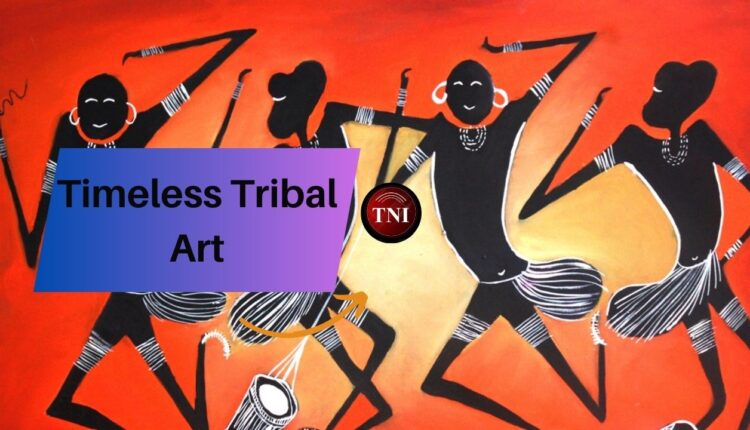The Living Canvas of Odisha: Tribal Art in Modern Times
For centuries, the tribal communities of this eastern Indian state have crafted a rich tapestry of creativity, drawing inspiration from their environment, rituals, and spiritual beliefs.
Nestled amidst the serene hills and lush forests of Odisha, tribal art is not just an aesthetic expression—it’s a way of life. For centuries, the tribal communities of this eastern Indian state have crafted a rich tapestry of creativity, drawing inspiration from their environment, rituals, and spiritual beliefs. Today, these ancient art forms are evolving, finding new relevance in contemporary contexts while battling challenges to retain their authenticity.
The Soul of Tradition: Timeless Tribal Art
Odisha’s tribal art resonates with a deep connection to nature. Take, for instance, the Saura paintings, with their intricate depictions of daily life and cosmology. These wall murals, crafted with natural dyes, tell stories of ancestors, deities, and life events through minimalist human figures and rhythmic geometric patterns. They are more than art; they are a medium of storytelling and spirituality.
Similarly, Dhokra metal art, practiced by the Gonds and other tribes, uses the lost-wax casting technique to create exquisite sculptures of animals, deities, and functional items. These pieces, often symbolic of tribal life and mythology, are timeless in their rustic charm.
The Dongria Kondh textiles, woven with natural dyes, are another testament to the ingenuity of Odisha’s tribal communities. Their geometric patterns mirror the symbiotic relationship they share with nature. Whether it’s wood carvings, stone sculptures, or tribal dances like the Ghumura, each art form carries the ethos of a community deeply rooted in its traditions.
The Modern Renaissance: Tribal Art Finds a New Voice
In a rapidly modernizing world, Odisha’s tribal art is not just surviving but thriving in reimagined ways. Urban artists and designers have begun to collaborate with tribal artisans, blending ancient techniques with contemporary aesthetics. For instance, Saura motifs now adorn everything from coffee mugs to canvas paintings, bringing a slice of tribal life into urban households.
Fashion designers, too, are weaving tribal patterns into their creations, crafting garments that speak of sustainability and heritage. These efforts not only preserve the essence of tribal art but also introduce it to a global audience.
Support Independent Journalism? Keep us live.
Interior decor has become another frontier for tribal art. From Dhokra sculptures to Saura-inspired wall hangings, these elements are now coveted pieces in modern homes. E-commerce platforms have further amplified their reach, enabling artisans to showcase and sell their work globally.
Challenges on the Path to Progress
Despite this renaissance, the journey of tribal art into modernity is fraught with challenges. Younger generations often move away from traditional crafts in search of economic stability. Artisans frequently face exploitation, receiving meager returns for their labor-intensive creations. The risk of over-commercialization also looms large, threatening the authenticity of these art forms.
However, initiatives by the government and non-governmental organizations (NGOs) are making a difference. Programs like TRIFED and tribal art fairs in cities like Bhubaneswar provide platforms for artisans to connect with a wider audience. Educational workshops ensure that the younger generation not only learns the craft but also adapts it to contemporary tastes without losing its essence.
A Legacy Reimagined
Odisha’s tribal art is more than a cultural asset; it is a living, breathing heritage that has weathered the storms of time. As it finds expression in modern contexts, it serves as a bridge between the past and the present, tradition and innovation.
The global appreciation of this art is not just a celebration of its beauty but also a recognition of the resilience and creativity of the communities that nurture it. In every brushstroke, weave, and sculpture lies a story of survival and reinvention—proof that art, much like life, adapts and endures.
Odisha’s tribal art is no longer confined to the walls of mud huts or the hands of its creators. It is now a shared treasure, a global canvas, and a symbol of how tradition can seamlessly blend with modernity, without losing its soul.


Comments are closed.